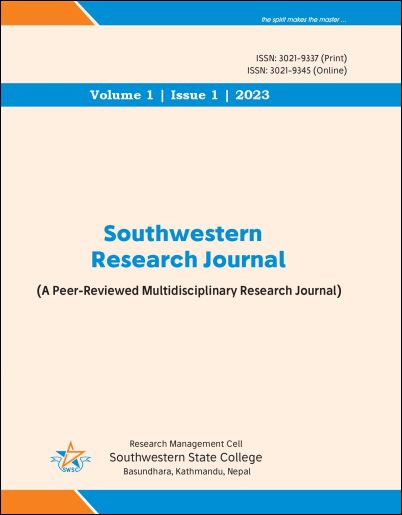Perception of Determinants of Psychotic Patients and Impact of Psychotic Patients on the Family of Kathmandu District in Nepal
DOI:
https://doi.org/10.3126/srj.v1i1.62268Keywords:
Biological, Determinants, Emotional, Health, Impacts, Physical well-being, Psychotic Patients, Social DterminantsAbstract
Perception of determinants of psychotic patients and their impacts on the family of Kathmandu district in Nepal aims at finding out the determinants in terms of biological, psychological, and sociological aspects and their impacts in terms of social, financial, emotional, and health. The theoretical method is incorporated for roughly 30 caregivers (the sample size is estimated with the Population Proportion Formula) of psychotic patients in Nepal. Nonclinical data was used for the analysis, with a survey method for quantitative data and an interview method for qualitative data. The questionnaire and interview schedule are used as study instruments. Those instruments are tested through conceptual definitions, operational definitions, design, development, statistical analysis, and thematic content analysis. The analysis of the data for objective number 1 revealed that social determinants had the highest number of occurrences, but these were actually psychosocial and biological determinants. These determinants were directly or indirectly related to psychological or emotional factors and are synchronized with the bio-psychosocial model. (B.P.S.) developed by George Libman Engel of the University of Rochester Medical Center, New York. The results of objective number 2 concluded that the emotional impacts of psychotic patients were the most prominent, followed by social, financial, and health impacts. It is clear that emotional impact comes first, followed by other impacts such as financial, social, and health. These findings will support the fresh data for the urgent need for further in-depth study of the determinants of psychotic patients and their impacts on the family.




